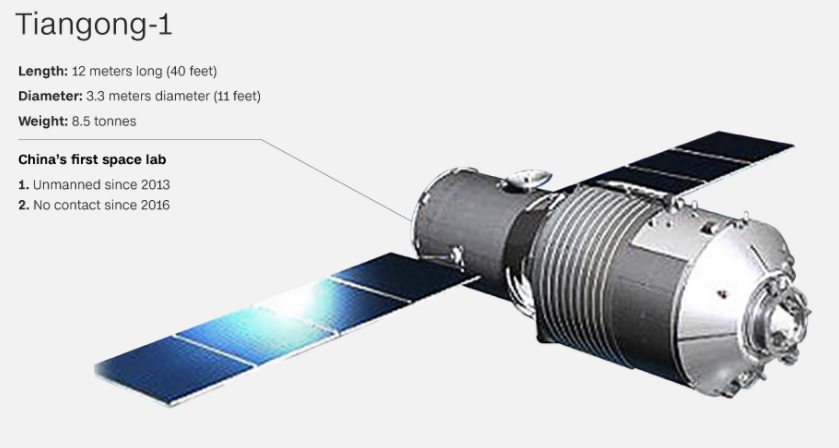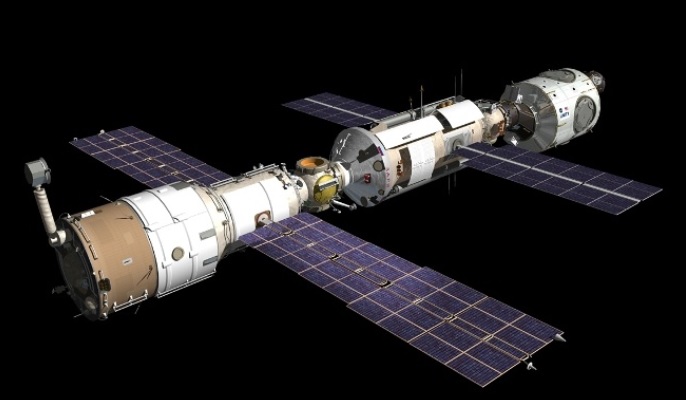Chinese Tiangong-I Space Station to Crash on Earth this weekend
The Tiangong-I space station owned by China will be crashing on earth on Saturday or Sunday after it went out of control.
Read More:
Space experts have reported that the debris will be seen as dazzling fireball. The name Tiangong means “heavenly palace.”
The Chinese lost control of the space station back in the year 2016. Experts have already revealed that if you are in the right place and at the right time you will be able to see the debris arriving on earth.
The space station is the size of a bus and it weighs 8.5 tonnes compared to the largest space station on orbit called International Space Station which weighs 400 tonnes. The Chinese spacecraft travels at 16,500 miles per hour.
The Chinese Tiangong-I has had astronauts visiting it before it lost control. These are: a)Wang Yaping and b) Liu Yang.
Note that this is not the first time that people are losing control of a space station. In 2001, Russian Space Station (Mir which weights 120 tonnes) went out of control and had to be stirred to earth. It happened safely and it landed on the Pacific Ocean.
In fact the debris that end up landing on earth is estimated to be between 20-40 percent of the spacecraft because a large portion of it is consumed by an inferno on re-entry to the earth.
There are few parts of the space station which survive the high temperatures and fire that ensures out if friction as a result of high speed involved on re-entry.
In fact, experts have already pointed out that the most dangerous debris are the fuel tanks which are fire resistant and holds some toxic substances called hydrazine propellant.
Before it went out-of-control, the Chinese Space Station flew over water and land. It’s estimated that 5 billion people live directly below its flight path in regions such as Africa, North and South America, China, Australia and Middle East.

Since most of the earth’s surface (75%) comprises of water bodies, the chances of the debris falling on people is quite low.
“Inside the zone, the risk of being hit is about the same as being hit by lightening twice in the same year.” said Holger Krag, the head Space Debris Office at the European Space Agency (ESA).
There was a rare occurrence in 1997 when Loittie Williams a resident of Oklahoma was hot by debris from the crashing of Delta II rocket.


